화면의 화질과 해상도 면에서 우리가 어떻게 이렇게 멀리 왔는지 생각해 본 적이 있나요? 옛날의 흐릿하고 픽셀화된 디스플레이에서 오늘날의 놀라울 정도로 선명한 영상까지, 해상도의 진화는 거친 여정이었습니다. 여러분, 안전띠를 매세요. 2K, 4K, 8K(UHD-2) 등의 영역을 여행할 예정이니까요!
이런 상황을 상상해 보세요: 여러분은 TV 앞에 앉아 최신 블록버스터 영화를 간절히 기다리고 있습니다. 오프닝 크레딧이 나오면서 여러분은 즉시 비교할 수 없는 디테일과 깊이의 세계로 옮겨집니다. 머리카락 한 올, 먼지 한 점, 복잡한 질감 하나하나가 여러분의 눈앞에서 살아납니다. 이것이 바로, 친구들이여, 고해상도의 힘입니다.
하지만 우리는 어떻게 여기까지 왔을까요? 추억의 골목길로 여행을 떠나 해상도 개발과 디스플레이 진화의 매혹적인 역사를 살펴보겠습니다.
목차

2K 해상도 기본 사항
고화질 영상의 영역에서 "2K 해상도"라는 용어는 종종 뜨거운 감자처럼 던져집니다. 하지만 정확히 무슨 뜻이고, 왜 신경 써야 할까요? 자세히 살펴보죠.
다양한 결의안의 정의와 중요성
디지털 디스플레이의 맥락에서 해상도는 이미지나 비디오를 구성하는 픽셀 수를 말합니다. 픽셀이 많을수록 그림이 더 선명하고 자세해집니다. 개별적인 붓놀림이 더 많은 캔버스를 갖는 것과 같아서 더 복잡하고 생생한 그림을 그릴 수 있습니다.
2K 해상도, 즉 2048 x 1080 픽셀은 한때 고화질 디스플레이의 산업 표준이었던 1080p(1920 x 1080 픽셀)보다 한 단계 업그레이드된 것입니다. 2K가 엄청난 도약처럼 들리지 않을 수 있지만, 이미지 품질과 디테일에서 눈에 띄는 개선을 제공합니다.
하지만 잠깐만요, 그게 다가 아닙니다! 3840 x 2160픽셀의 4K 해상도는 모든 것을 완전히 새로운 수준으로 끌어올립니다. 화면의 픽셀 수를 4배로 늘린다고 상상해보세요. 바로 이런 종류의 시각적 화려함을 말하는 것입니다. 그리고 절대적인 선명도를 요구하는 사람들에게 8K 해상도(7680 x 4320픽셀)는 3,320만 개의 눈부신 픽셀을 제공하는 성배입니다.
2K, 4K, 8K 해상도 비교
이러한 결의안이 어떻게 비교되는지 더 잘 알 수 있도록 편리한 표를 만들어 보겠습니다.
| 해결 | 픽셀(전체) | 종횡비 |
| 2천 | 2,073,600 | 1.9:1 |
| 4K | 8,294,400 | 1.9:1 |
| 8K | 33,177,600 | 1.9:1 |
보시다시피, 각 해상도 수준은 픽셀 수와 그에 따른 이미지 품질에서 상당한 도약을 나타냅니다. 소형차에서 고급 세단으로, 그리고 개인용 제트기로 업그레이드하는 것과 같습니다. 디테일과 몰입감의 수준이 점점 더 좋아지고 있습니다.
2K 해상도 및 호환 장치
좋습니다. 이제 기본을 알았으니 2K 해상도의 영광을 실제로 경험하는 방법에 대해 이야기해 보겠습니다. 안전띠를 매세요. 케이블, 인터페이스, 기기 호환성의 핵심에 대해 자세히 알아보겠습니다.
2K 해상도 소개 및 응용 분야
2048 x 1080 픽셀 수의 2K 해상도는 디지털 시네마 프로젝션부터 전문 비디오 편집 등 다양한 응용 분야에서 자리를 잡았습니다. 해상도 기술의 최첨단은 아니지만 2K는 여전히 오래된 1080p보다 상당한 개선을 제공하여 은행을 털지 않고도 이미지 품질을 한 단계 높이고자 하는 사람들에게 인기 있는 선택입니다.
지원되는 케이블 및 인터페이스 유형
2K 해상도의 잠재력을 최대한 활용하려면 케이블과 인터페이스 유형이 작업에 적합한지 확인해야 합니다. 2K 출력에 가장 일반적인 옵션은 다음과 같습니다.
- HDMI 1.4: 이것은 초당 최대 30프레임(fps)에서 2K 해상도를 지원하는 데 필요한 최소 HDMI 버전입니다. 가장 최첨단 옵션은 아니지만 HDMI 1.4는 널리 지원되고 쉽게 구할 수 있습니다.
- 디스플레이포트: 2K 출력을 위한 또 다른 인기 있는 선택인 DisplayPort는 더 높은 화면 재생 빈도와 해상도(버전에 따라 최대 4K 이상)를 지원하여 견고하고 안정적인 연결을 제공합니다.
2K 출력을 위한 케이블 선택
2K 출력을 위한 케이블을 선택할 때는 케이블 길이, 대역폭, 기기와의 호환성과 같은 요소를 고려하는 것이 필수적입니다. 고려해야 할 최고의 옵션은 다음과 같습니다.
| 케이블 유형 | 최대 해상도 | 최대 재생 빈도 | 최대 케이블 길이 |
| HDMI 1.4 | 2천 | 60Hz | 50피트 |
| 디스플레이포트 1.2 | 2천 | 60Hz | 100피트 |
| 디스플레이포트 1.3 | 2천 | 120Hz | 100피트 |
| DVI-D | 2천 | 60Hz | 50피트 |
| USB-C(DP Alt 모드 포함) | 2천 | 60Hz | 16.4 피트 |
안정적인 2K HDMI 케이블을 찾는 분들을 위해 Cabletime의 매우 긴 50피트 HDMI 2.0 케이블 (다양한 길이로 제공)은 작업을 완료하는 예산 친화적인 옵션입니다. DisplayPort 케이블을 찾고 있다면 DisplayPort 대 DisplayPort 1.2 케이블 (최대 16.4피트 길이로 제공)은 견고한 선택입니다.
기술 사양 및 성능 요구 사항
원활한 2K 경험을 보장하려면 필요한 기술 사양과 성능 요구 사항을 충족하는 호환 장치를 갖는 것이 중요합니다. 고려해야 할 몇 가지 핵심 요소는 다음과 같습니다.
- 그래픽 카드: 그래픽 처리 장치(GPU)는 원하는 프레임 속도와 이미지 품질 설정에서 2K 해상도를 렌더링하고 출력할 수 있어야 합니다.
- 디스플레이 입력: 모니터나 TV에는 2K 해상도 신호를 수용할 수 있는 HDMI 1.4 또는 DisplayPort 입력이 있어야 합니다.
- 대역폭: 2K 해상도에 필요한 방대한 양의 데이터를 전송하려면 충분한 대역폭을 확보하는 것이 필수적입니다. HDMI 1.4는 최대 10.2Gbps를 지원하는 반면 DisplayPort 1.2는 최대 17.28Gbps를 제공합니다.
- 처리 능력: 사용 시나리오(예: 게임, 비디오 편집 등)에 따라 더 높은 해상도와 관련된 작업 부하 증가를 처리하려면 강력한 CPU와 충분한 RAM이 필요할 수 있습니다.
2K 해상도의 장단점
모든 기술과 마찬가지로 2K 해상도에는 고유한 장단점이 있습니다. 가장 주목할 만한 몇 가지를 간단히 살펴보겠습니다.
장점:
- 1080p에 비해 향상된 이미지 품질과 디테일
- 다양한 기기 및 콘텐츠 소스에서 폭넓게 지원
- 4K, 8K 등 고해상도보다 저렴
단점:
- 더 높은 해상도가 보편화됨에 따라 미래 지향적인 기능이 제한됨
- 최적의 성능을 위한 하드웨어 요구 사항 증가
- 이전 장치 또는 케이블과의 잠재적인 호환성 문제
4K 시대의 케이블과 장치
2K가 시각적 우수성의 정점이라고 생각했을 때, 4K 해상도가 등장하여 다시 한번 우리의 마음을 흔들었습니다. 여러분, 준비하세요. 초고화질(UHD)의 세계와 그것을 가능하게 하는 케이블과 장치를 탐험할 예정이니까요.
4K 해상도 매개변수 및 이미지 선명도 향상에 대한 설명
4K 해상도, UHD(Ultra High Definition)라고도 알려진 이 해상도는 무려 3840 x 2160픽셀을 자랑합니다. 이는 오래된 1080p의 4배에 달하는 해상도입니다! 830만 개의 픽셀을 사용할 수 있으므로, 입이 떡 벌어질 정도의 이미지 선명도를 기대할 수 있습니다. 마치 현실로 통하는 창문을 가진 것과 같으며, 모든 미세한 디테일, 모든 질감, 모든 뉘앙스가 놀라운 정밀도로 살아납니다.
하지만 단순히 픽셀 수만은 아닙니다. 4K는 더 넓은 색 영역과 더 높은 동적 범위를 제공하여 더 풍부하고 생생한 색상과 더 깊은 검정색을 구현합니다. 가장 섬세한 파스텔에서 가장 대담하고 생생한 색조에 이르기까지 모든 미묘한 음영과 색조를 인식할 수 있다고 상상해보세요. 블록버스터 영화를 보든 비디오 게임에서 가상 세계를 탐험하든, 액션에 진정으로 몰입할 수 있는 시각적 경험입니다.
4K 비디오 전송 표준
4K 해상도의 잠재력을 최대한 활용하려면 케이블과 장치가 작업에 적합한지 확인해야 합니다. 좋은 소식은 다음과 같은 4K 비디오 전송에 대한 확립된 표준이 있다는 것입니다.
- HDMI 2.0: 이 널리 채택된 표준은 초당 최대 60프레임(fps)의 4K 해상도와 함께 HDR(High Dynamic Range) 및 더 넓은 색 영역을 지원합니다.
- HDMI 2.1: 최신 HDMI 버전은 한 단계 더 나아가 최대 10K의 해상도, 더 높은 프레임 속도(4K의 경우 최대 120fps), 그리고 가변 화면 주사율(VRR) 및 자동 저지연 모드(ALLM)와 같은 고급 기능을 지원합니다.
- 디스플레이포트 1.4: 뒤처지지 않기 위해 DisplayPort 1.4도 HDR과 더 넓은 색 영역과 함께 120Hz에서 4K를 지원합니다.
4K 출력을 위한 케이블 선택
표준이 마련되었으니 케이블에 대해 이야기할 차례입니다. 4K 출력에 관해서는 케이블이 초고화질 콘텐츠에 필요한 증가된 대역폭과 데이터 처리량을 처리할 수 있는지 확인해야 합니다. 고려해야 할 몇 가지 최고 수준의 옵션은 다음과 같습니다.
| 케이블 유형 | 최대 해상도 | 최대 재생 빈도 | 최대 케이블 길이 |
| HDMI 2.0 | 4K | 60Hz | 16.4 피트 |
| HDMI 2.1 | 4K | 120Hz | 16.4 피트 |
| 디스플레이포트 1.2 | 4K | 60Hz | 100피트 |
| 디스플레이포트 1.3 | 4K | 120Hz | 100피트 |
| DVI-D | 4K | 60Hz | 50피트 |
| USB-C(DP Alt 모드 포함) | 4K | 60Hz | 16.4 피트 |
안정적인 4K HDMI 케이블을 위해서는 프리미엄 HDMI 2.0 수-수 케이블 (다양한 길이로 제공)은 충분한 대역폭과 HDMI 2.0 표준과의 호환성을 제공하는 견고한 선택입니다. DisplayPort 팀이라면 Displayport 1.4에서 HDMI 2로.1 케이블 (최대 9.8피트)는 원활한 4K 연결을 위한 훌륭한 옵션입니다.
4K 호환 기기의 기능 및 성능
물론, 올바른 케이블을 갖는 것은 퍼즐의 한 조각일 뿐입니다. 4K의 마법을 진정으로 경험하려면 작업에 적합한 장치가 필요합니다. 4K 호환성을 위한 몇 가지 주요 기능과 성능 요구 사항에 대한 간략한 요약은 다음과 같습니다.
- 4K 디스플레이: 최첨단 4K TV이든 고해상도 모니터이든, 디스플레이에는 놀라운 4K 영상을 제공하는 데 필요한 HDMI 또는 DisplayPort 입력 단자와 패널 기술(예: IPS, OLED)이 있어야 합니다.
- 강력한 그래픽: 4K 콘텐츠를 원활하게 렌더링하고 출력하려면 강력한 그래픽 카드가 필수적이며, 특히 게임이나 비디오 편집과 같이 요구 사항이 높은 애플리케이션을 사용할 때 더욱 그렇습니다.
- 강력한 처리 능력: 초고화질 콘텐츠와 관련된 작업 부하 증가를 처리하려면 우수한 CPU와 충분한 RAM이 필수적입니다.
- 4K 콘텐츠 소스: 스트리밍 서비스, 블루레이 디스크, 게임 콘솔 등 어떤 기기를 사용하든 4K 해상도를 제대로 감상하려면 4K 지원 콘텐츠가 필요합니다.
4K 해상도의 장단점
모든 기술과 마찬가지로 4K 해상도에는 장점과 단점이 공평하게 있습니다. 가장 주목할 만한 몇 가지를 간단히 살펴보겠습니다.
장점:
- 숨 막힐 정도로 세부적이고 실제 같은 영상
- 더 넓은 색 영역과 더 높은 다이내믹 레인지로 더욱 풍부하고 생생한 색상 제공
- 4K가 콘텐츠 전송의 새로운 표준이 되면서 미래 지향적입니다.
단점:
- 최적의 성능을 위한 하드웨어 요구 사항(GPU, CPU, 대역폭) 증가
- 일부 지역 또는 플랫폼에서는 제한된 콘텐츠 제공
- 낮은 해상도에 비해 비용이 더 높음
8K(UHD-2) 솔루션
4K가 시각적 우수성의 정점이라고 생각했을 때, 8K 해상도가 등장하여 다시 한번 우리의 마음을 흔들어 놓습니다. 여러분, 준비하세요. 초고화질 기술의 최첨단과 그것을 가능하게 하는 케이블과 장치를 탐험할 예정이니까요.
8K 해상도의 기술적 세부 사항 및 이미지 품질 향상
8K 해상도는 UHD-2 또는 Super Hi-Vision이라고도 하며, 현대 영상 기술의 진정한 경이로움입니다. 무려 7680 x 4320픽셀, 즉 총 3320만 픽셀로 8K는 상상을 초월하는 이미지 선명도와 디테일 수준을 제공합니다.
모든 작은 뉘앙스, 모든 미묘한 질감, 모든 세세한 디테일을 놀라운 정밀도로 인식할 수 있다고 상상해보세요. 마치 창문을 통해 현실을 들여다보는 것 같은 느낌이 들죠. 자연 다큐멘터리를 보든, 비디오 게임에서 가상 세계를 탐험하든, 고해상도 의료 영상을 검사하든, 몰입 수준은 정말 타의 추종을 불허합니다.
하지만 단순히 픽셀 수만은 아닙니다. 8K는 더 넓은 색 영역과 더 높은 동적 범위를 자랑하며, 그 결과 더 풍부하고 생생한 색상과 더 깊은 검정색을 구현합니다. 모든 음영과 색조가 놀라운 정확도로 렌더링되어 보이는 세상의 전체 스펙트럼을 경험하는 것과 같습니다.
케이블 및 연결 기술 요구 사항
8K 해상도의 잠재력을 최대한 활용하려면 방대한 데이터 처리량과 대역폭 요구 사항을 처리할 수 있는 케이블과 연결 기술이 필요합니다. 알아야 할 핵심 표준과 사양은 다음과 같습니다.
- HDMI 2.1: 최신 HDMI 버전은 최대 10K의 해상도(8K의 경우 프레임 속도는 낮음)를 지원하고, 가변 재생 빈도(VRR), 자동 저지연 모드(ALLM)와 같은 고급 기능과 더 높은 대역폭(최대 48Gbps) 지원도 제공합니다.
- 디스플레이포트 2.0: 곧 출시될 DisplayPort 2.0 표준은 60Hz에서 8K 해상도를 지원하고 최대 대역폭이 77.4Gbps에 달할 것이라고 약속합니다. 이는 초고화질 콘텐츠의 요구 사항을 처리하기에 충분한 수준입니다.
- 광섬유 HDMI: 기존 구리 케이블을 사용하기 어려운 긴 케이블 설치나 경우, 광섬유 HDMI 솔루션은 더 먼 거리에 걸쳐 8K 신호를 전송할 수 있는 안정적이고 고대역폭의 대안을 제공합니다.
8K 출력을 위한 케이블 선택
8K 출력을 위한 케이블을 선택할 때는 필요한 대역폭과 데이터 처리량 요구 사항을 충족하는지 확인해야 합니다. 고려해야 할 몇 가지 최고 수준의 옵션은 다음과 같습니다.
| 케이블 유형 | 최대 해상도 | 최대 재생 빈도 | 최대 케이블 길이 |
| HDMI 2.1 | 8K | 120Hz | 16.4 피트 |
| 디스플레이포트 1.4 | 8K | 60Hz | 다양하다 |
| USB-C(DP Alt 모드 포함) | 8K | 60Hz | 다양하다 |
안정적인 8K HDMI 연결을 위해 CABLETIME 액티브 옵티컬 HDMI 2.1 케이블 (다양한 길이로 제공)은 견고한 선택으로, 충분한 대역폭과 HDMI 2.1 표준과의 호환성을 제공합니다. 미래 지향적인 광섬유 솔루션을 찾고 있다면, 액티브 파이버 옵티컬 HDMI 2.0 케이블(AOC) (최대 100m 길이로 제공)은 장거리에 걸쳐 8K 신호를 전송하는 최고의 옵션입니다.
8K와 미래의 과제를 지원하는 마켓 디바이스
8K가 공상과학 소설에 나오는 것처럼 보일지 몰라도, 이 최첨단 해상도를 지원하는 기기와 디스플레이가 이미 시장에 많이 나와 있습니다. 고급 전문가용 모니터와 TV부터 특수 영상 장비까지, 8K 혁명은 천천히 그러나 확실히 인기를 얻고 있습니다.
그러나 이처럼 엄청난 해상도와 대역폭 요구 사항이 있기 때문에 8K가 주류가 되기 전에 극복해야 할 상당한 과제가 여전히 있습니다. 가장 큰 장애물 중 하나는 8K 콘텐츠를 원활하게 렌더링하고 출력하는 데 필요한 엄청난 양의 처리 능력이며, 특히 게임이나 비디오 편집과 같은 까다로운 애플리케이션에서 그렇습니다.
현재 시중에 나와 있는 가장 강력한 그래픽 카드와 CPU조차도 8K 해상도에서 일관된 프레임 속도와 성능을 유지하는 데 어려움을 겪을 수 있습니다. 특히 레이 트레이싱, 높은 화면 주사율 및 기타 고급 렌더링 기술을 적용하는 경우 더욱 그렇습니다.
또 다른 과제는 콘텐츠 제작 및 제공 생태계에 있습니다. 전문 영화 촬영 감독과 사진 작가는 8K의 탁월한 디테일과 미래 지향적 기능을 수용하고 있지만, 주류 소비를 위한 8K 콘텐츠의 광범위한 채택은 아직 멀었습니다.
스트리밍 플랫폼, 케이블 제공업체, 심지어 블루레이 디스크와 같은 물리적 미디어조차도 8K 콘텐츠의 방대한 파일 크기와 대역폭 요구 사항을 수용하도록 적응해야 합니다. 이는 전체 콘텐츠 생성 및 전달 파이프라인에서 협력과 혁신이 필요한 복잡하고 다면적인 문제입니다.
8K 해상도의 장단점
모든 최첨단 기술과 마찬가지로 8K 해상도에는 고유한 장단점이 있습니다. 가장 주목할 만한 몇 가지를 간단히 살펴보겠습니다.
장점:
- 비교할 수 없는 이미지 품질과 디테일로 진정한 몰입감 넘치는 시청 경험을 제공합니다.
- 8K가 전문 이미징 및 콘텐츠 제작의 새로운 표준으로 부상함에 따라 미래 지향적입니다.
- 더 풍부하고 생생한 영상을 위해 더 넓은 색 영역과 더 높은 다이내믹 레인지
단점:
- 최적의 성능을 위한 매우 높은 하드웨어 요구 사항(GPU, CPU, 대역폭)
- 제한된 콘텐츠 가용성 및 기존 장치 및 인프라와의 호환성
- 4K와 같은 낮은 해상도에 비해 비용이 상당히 높습니다.
초고해상도의 과제 연결
8K 이상의 초고해상도 영역으로 진출하면서, 이처럼 방대한 양의 데이터를 전송하고 처리하는 과제는 점점 더 복잡해지고 있습니다. 하지만 과제가 있는 곳에는 혁신과 기술적 돌파구의 기회도 있습니다.
초고해상도 기술 및 기대되는 화질에 대한 지속적인 연구
8K가 시각적 우수성의 정점처럼 보일지 몰라도, 전 세계의 연구자와 엔지니어는 이미 초고해상도 기술의 다음 전선을 탐구하는 데 열심히 노력하고 있습니다. 16K에서 정신을 현혹시키는 해상도에 이르기까지, 더 뛰어난 이미지 품질과 디테일에 대한 탐구는 끊임없이 계속됩니다.
하지만 단순히 화면에 더 많은 픽셀을 채우는 것만이 아닙니다. 진정한 과제는 실제 세계의 전체 깊이, 뉘앙스, 다이내믹 레인지를 포착하고 재현할 수 있는 이미징 기술을 개발하는 것입니다. 여기에는 고급 센서 설계와 계산 사진 기술부터 색상과 휘도 레벨의 전체 스펙트럼을 정확하게 렌더링할 수 있는 최첨단 디스플레이 기술까지 모든 것이 포함됩니다.
디스플레이가 창문을 통해 보는 경험을 재현할 수 있는 세상을 상상해보세요. 빛, 질감, 깊이의 미묘한 변화까지 충실하게 재현합니다. 엄청난 목표지만, 의료 영상, 과학적 시각화, 심지어 가상 현실과 같은 분야에 혁명을 일으킬 수 있습니다.
초고해상도 전송을 위한 최첨단 케이블 기술
해상도가 계속 높아짐에 따라 더 빠르고 효율적인 데이터 전송에 대한 필요성이 가장 중요해졌습니다. 기존의 구리 케이블은 신뢰할 수 있지만 결국 대역폭과 신호 무결성 측면에서 한계에 도달할 수 있으며, 특히 장거리에서는 그렇습니다.
이러한 과제를 해결하기 위해 연구자와 엔지니어는 최소한의 손실이나 간섭으로 초고해상도 신호를 전송할 수 있는 최첨단 케이블 기술을 모색하고 있습니다.유망한 대안 중 하나는 광섬유 케이블 기술인데, 이는 매우 높은 대역폭과 낮은 신호 감쇠율을 제공하여 장거리에 걸쳐 막대한 양의 데이터를 전송하는 데 적합합니다.
또 다른 흥미로운 발전은 초고해상도 콘텐츠를 처리할 수 있는 무선 전송 기술의 등장입니다. 아직 초기 단계이기는 하지만 8K 이상의 해상도를 무선으로 전송한다는 전망은 우리가 콘텐츠를 소비하고 상호 작용하는 방식에 혁명을 일으켜 물리적 케이블의 필요성을 완전히 없앨 수 있습니다.
장치 및 커넥터 설계의 미래 동향
해상도가 점차 더 발전하면서 가능성의 경계도 넓어지고 있으며, 이에 따라 장치와 커넥터의 설계도 증가된 대역폭과 데이터 처리량 수요에 맞게 발전해야 합니다.
우리가 이미 보고 있는 한 가지 추세는 USB4와 Thunderbolt와 같은 고급 커넥터 표준의 채택으로, 이는 초고속 데이터 전송 속도와 DisplayPort 및 HDMI를 포함한 다양한 프로토콜을 지원합니다. 이러한 다재다능한 커넥터는 연결 환경을 간소화하고 다양한 장치와 해상도에서 원활한 경험을 제공하는 데 중요한 역할을 할 수 있습니다.
또 다른 주시해야 할 트렌드는 구성 요소와 커넥터의 지속적인 소형화입니다. 장치가 더 작고 컴팩트해짐에 따라 공간 효율적인 연결 솔루션에 대한 필요성이 가장 중요해졌습니다. 더 작은 폼 팩터에 더 많은 대역폭을 넣을 수 있는 혁신적인 디자인은 강력하면서도 휴대성이 뛰어난 초고해상도 디스플레이와 장치를 구현하는 데 핵심이 될 것입니다.
사용자 선택 가이드
고려해야 할 해상도, 케이블 유형, 장치 사양이 너무 많아서 필요에 맞는 올바른 설정을 선택하는 것은 어려운 일이 될 수 있습니다. 걱정하지 마세요, 친애하는 독자 여러분. 고해상도의 물을 자신 있게 항해할 수 있도록 포괄적인 사용자 선택 가이드를 마련했습니다.
사용자가 필요와 예산에 따라 케이블과 장치를 선택하기 위한 가이드
고해상도 설정에 적합한 케이블과 장치를 선택할 때는 특정 요구 사항과 예산을 고려하는 것이 중요합니다. 정보에 입각한 결정을 내리는 데 도움이 되는 편리한 가이드를 소개합니다.
- 원하는 해상도를 결정하세요: 2K, 4K, 8K 또는 그 이상을 목표로 하고 계신가요? 해상도 목표는 케이블과 장치 요구 사항을 결정합니다.
- 콘텐츠 소스 평가: 어떤 종류의 콘텐츠를 소비할 계획인가요? 영화, TV 쇼, 게임, 전문 비디오 편집? 기기와 케이블이 선호하는 콘텐츠 소스와 호환되는지 확인하세요.
- 거리 요구 사항을 고려하세요: 장거리에 걸쳐 신호를 전송해야 하는 경우 더 긴 케이블을 처리할 수 있는 케이블과 기술(예: 광섬유 HDMI, HDBaseT)을 선택해야 할 수도 있습니다.
- 예산을 평가하세요: 해상도가 높을수록 가격도 비싼 경우가 많으므로 원하는 이미지 품질과 예산 사이에서 균형을 맞추는 것이 중요합니다.
- 미래에 대비한 설정: 최신 최고의 기술을 선택하고 싶겠지만, 얼마나 오랫동안 설정을 사용할 계획인지 고려하세요. 미래에 대비한 케이블과 장치에 투자하면 나중에 비용이 많이 드는 업그레이드를 피할 수 있습니다.
- 호환성 확인: 구매하기 전에 케이블, 기기, 콘텐츠 소스가 서로 호환되는지 확인하세요. 사양을 교차 참조하고 필요한 경우 전문가와 상의하세요.
다양한 브랜드 및 기술의 호환성 및 성능 평가
고해상도 케이블과 장치의 세계에서는 모든 브랜드와 기술이 동등하게 만들어진 것은 아닙니다.시장의 주요 기업 몇몇에 대한 간략한 평가는 다음과 같습니다.
케이블:
- 모노프라이스: 저렴하면서도 고품질의 케이블로 유명한 Monoprice는 다양한 해상도에 적합한 광범위한 HDMI 및 DisplayPort 옵션을 제공합니다.
- 케이블 문제: 내구성과 신뢰성에 중점을 둔 Cable Matters는 소비자와 전문가 모두에게 신뢰받는 케이블 솔루션 브랜드입니다.
- 폭시: 초고해상도를 장거리 전송할 수 있는 최첨단 광섬유 HDMI 케이블을 찾는 사람이라면 Phoxi가 최고의 경쟁자입니다.
장치:
- 엘지: OLED TV 기술을 선도하는 LG는 뛰어난 화질과 색 재현력을 갖춘 다양한 4K 및 8K TV를 제공합니다.
- 삼성: 양자점 디스플레이의 선구자인 삼성의 QLED TV와 모니터는 놀라운 비주얼을 제공하며 8K를 포함한 다양한 해상도를 지원합니다.
- 소니: 전문가급 디스플레이와 이미징 솔루션으로 유명한 소니는 업계 최고의 색상 정확도와 이미지 처리 기능을 갖춘 다양한 4K 및 8K 모니터와 TV를 제공합니다.
그래픽 카드:
- 엔비디아: RTX 3090 등 NVIDIA의 RTX 시리즈 그래픽 카드는 4K 및 8K 게임에 대한 강력한 지원은 물론 레이 트레이싱 및 DLSS와 같은 고급 기능도 제공합니다.
- (주)에스디에이치디(주): RX 6900 XT를 포함한 AMD의 Radeon RX 6000 시리즈는 고해상도 게임과 콘텐츠 제작을 위한 매력적인 대안을 제공합니다.
고해상도 장치 구매 시 고려 사항 및 일반적인 오해
고해상도 기기를 구매할 때는 사실과 허구를 구분하고 일반적인 오해를 피하는 것이 중요합니다. 염두에 두어야 할 몇 가지 주요 고려 사항은 다음과 같습니다.
- 해결책이 전부는 아니다: 해상도가 높을수록 이미지 품질과 디테일이 향상되지만, 색상 정확도, 대비율, 화면 재생 빈도와 같은 다른 요소도 전반적인 시청 경험을 결정하는 데 중요한 역할을 합니다.
- 수익 감소: 해상도가 높아짐에 따라, 특히 일반적인 거실 거리에서 볼 때 이미지 품질의 인식된 개선이 더 미묘해질 수 있습니다. 해상도와 화면 크기 및 시청 거리와 같은 다른 요소 간의 균형을 맞추는 것이 중요합니다.
- 호환성이 핵심입니다: 케이블, 장치 및 콘텐츠 소스가 원하는 해상도와 호환되는지 확인하세요. 호환되지 않는 구성 요소를 혼합하고 일치시키면 성능이 최적화되지 않거나 신호 전송이 완전히 실패할 수 있습니다.
- 미래 지향적 대비 vs. 노후화: 최신 최고의 기술에 투자하는 것이 유혹적이기는 하지만, 설정의 장수성과 미래 호환성을 고려하는 것도 중요합니다. 미래 보호와 조기 노후화를 피하는 것 사이의 균형을 맞추는 것이 중요합니다.
- 대역폭을 잊지 마세요: 더 높은 해상도는 전송 및 처리에 훨씬 더 많은 대역폭이 필요합니다. 케이블, 장치 및 네트워크 인프라가 증가된 데이터 수요를 처리할 수 있는지 확인하세요.
- 콘텐츠 가용성: 4K 콘텐츠가 점점 더 널리 보급되고 있지만, 8K 이상은 아직 초기 단계에 있습니다. 최첨단 해상도에 투자하기 전에 호환되는 콘텐츠의 가용성을 고려하세요.
- 교정은 중요합니다: 가장 진보된 디스플레이도 정확한 색상 재현과 최적의 이미지 품질을 보장하기 위해 적절한 보정을 통해 이점을 얻을 수 있습니다.

결론
2K에서 4K, 8K, 그 이상으로 고해상도의 영역을 탐험하면서 한 가지가 매우 분명해졌습니다. 시각적 우수성을 추구하는 것은 끊임없이 진화하는 여정입니다. 기술적 도약이 있을 때마다 우리는 화면에서 자연 세계의 완전한 깊이, 뉘앙스, 아름다움을 재현하는 데 한 걸음 더 다가갑니다.
초고해상도를 전송하고 처리하는 과제는 엄청나지만, 혁신을 위한 흥미로운 기회도 제공합니다. 광섬유 HDMI와 같은 최첨단 케이블 기술부터 무선 전송 혁신까지, 미래는 무한한 가능성을 가지고 있습니다.
소비자로서, 고해상도 풍경에 분별력 있는 눈과 변화를 수용하려는 의지로 접근하는 것이 필수적입니다. 우리의 필요, 예산, 호환성 요구 사항을 신중하게 평가함으로써, 우리는 시각적 사치와 실용적인 고려 사항 사이의 균형을 이루는 정보에 입각한 결정을 내릴 수 있습니다.
앞으로를 내다보면, 고해상도 시대는 아직 끝나지 않았다고 해도 과언이 아닙니다. 이미징 기술이 계속 발전하고 콘텐츠 제작자가 가능성의 경계를 넓히면서, 우리는 더 높은 해상도와 더 몰입감 있는 시청 경험이 등장할 것으로 기대할 수 있습니다.
따라서 분별력 있는 영화광이든, 전문적인 콘텐츠 제작자이든, 아니면 단순히 인생의 섬세한 디테일을 감상하는 사람이든, 이 여정을 받아들이고 현실과 디지털 예술의 경계가 흐릿해져 매끄럽고 시각적으로 아름다운 태피스트리로 변하는 미래에 대비하세요.
사람들은 또한 묻습니다
정말 8K가 4K보다 훨씬 나은가요?
네, 8K는 4K보다 훨씬 더 높은 해상도를 제공하여 확장된 색 공간으로 더 자세한 이미지를 제공합니다. 그러나 해상도가 화질의 유일한 요소는 아니며, HDR(High Dynamic Range) 성능, 대비율, 색상과 같은 다른 측면도 시청 경험에 상당한 영향을 미칠 수 있다는 점에 유의해야 합니다.
10K와 16K 비디오가 있나요?
네, 10K와 16K 해상도는 실제로 존재하며, 10K는 10,240x5,760 또는 4,320픽셀의 해상도를 가지고 있고, 16K는 무려 15,360 x 8,640픽셀을 자랑합니다. 그러나 이러한 해상도는 아직 소비자 제품에 널리 사용되지 않고 있으며, 대부분의 콘텐츠는 여전히 4K 이하의 해상도로 제작되고 있습니다.
TV가 클수록 화질이 더 좋나요?
더 큰 TV는 더 몰입감 있는 시청 경험을 제공할 수 있지만, 반드시 더 나은 품질을 제공하는 것은 아닙니다. 화질은 해상도, 고동적 범위(HDR) 성능, 대비율, 색상과 같은 요소에 의해 결정되며, 이는 크기에 관계없이 TV마다 다를 수 있습니다.

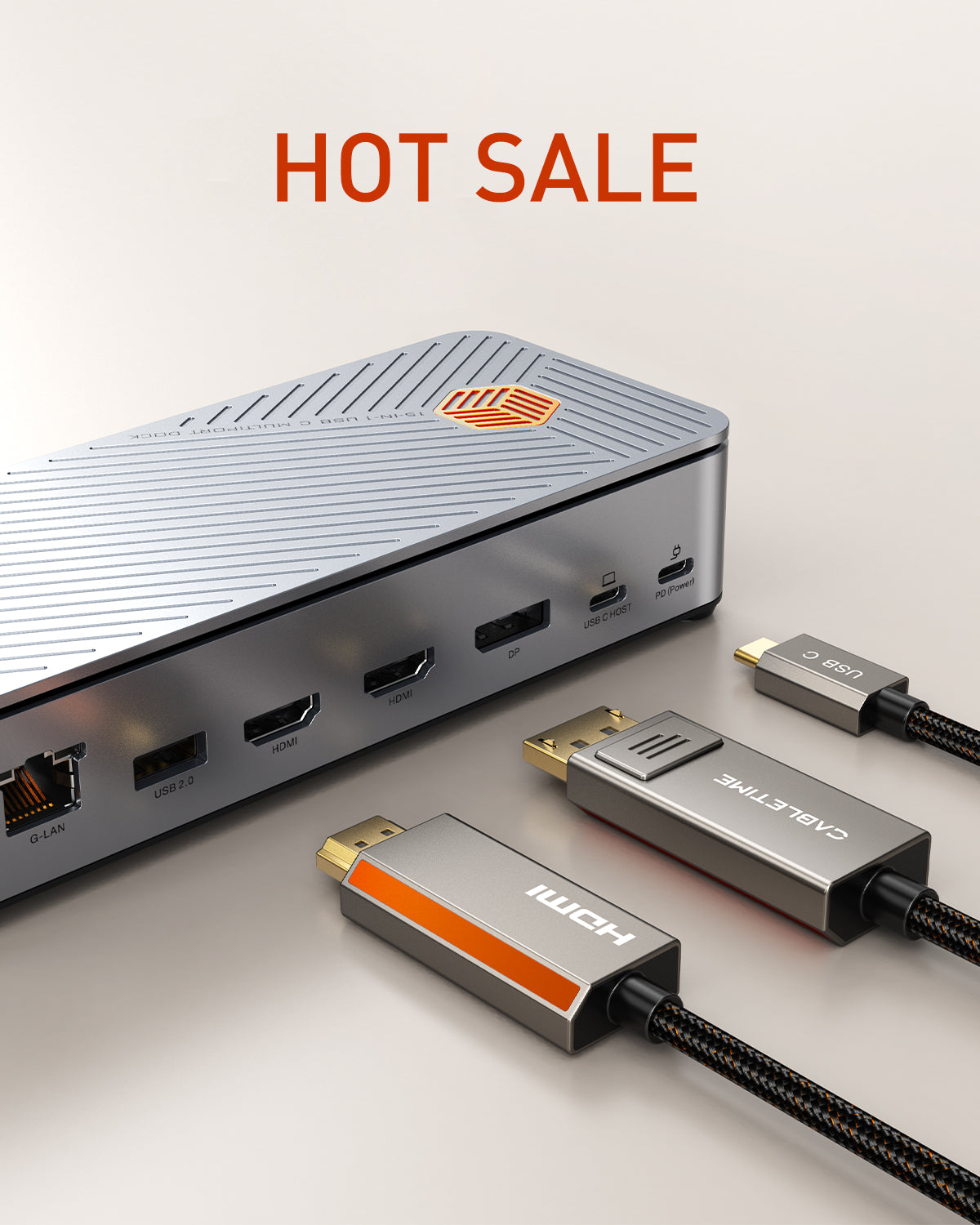
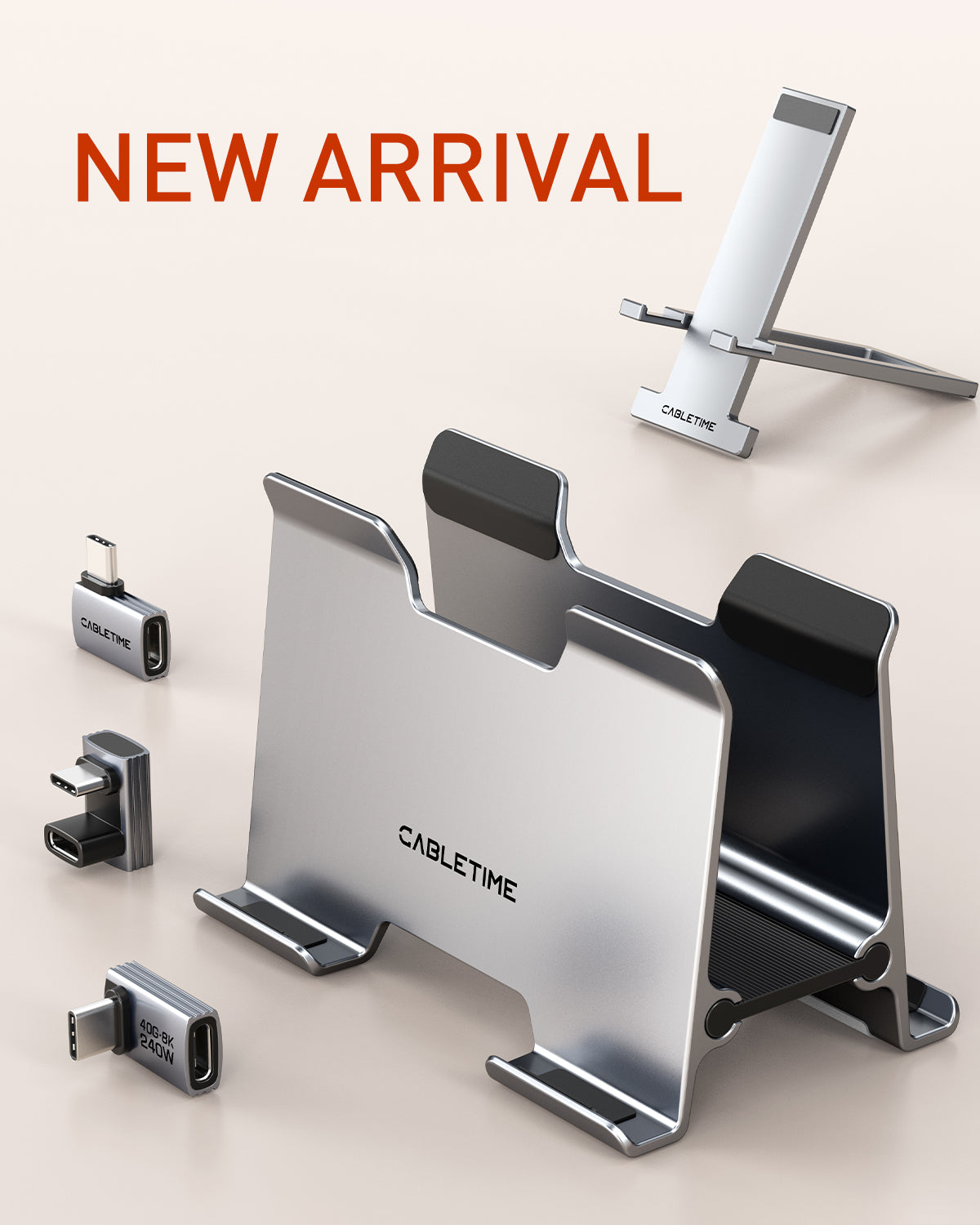
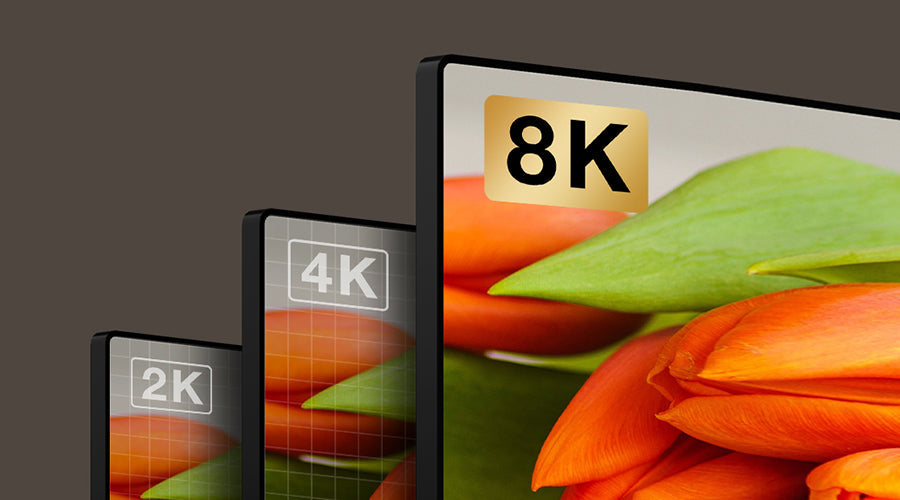
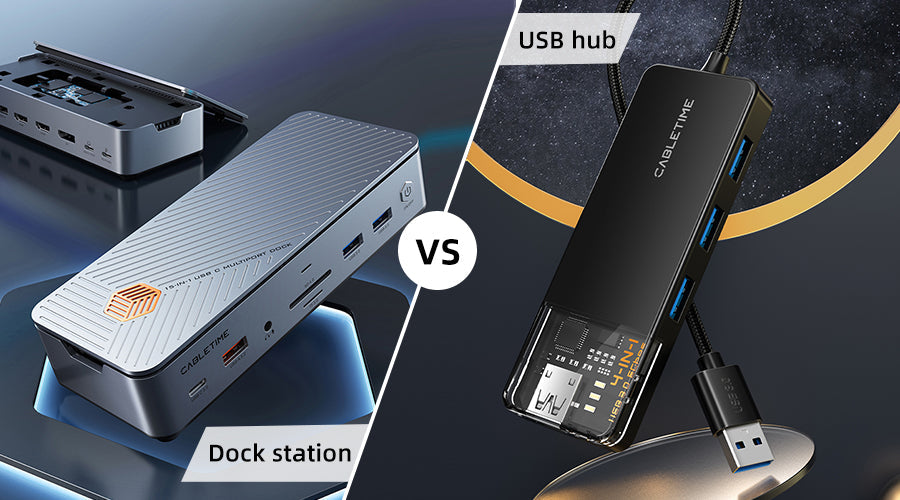
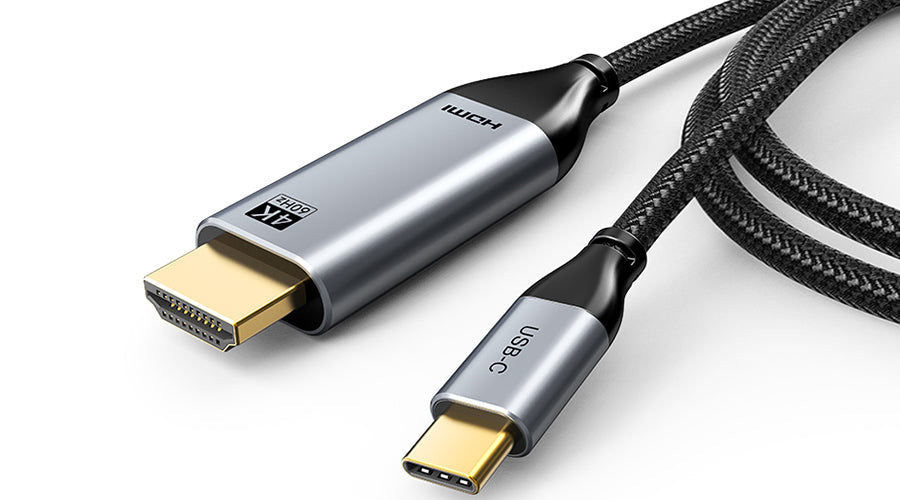
댓글을 남겨주세요
이 사이트는 hCaptcha에 의해 보호되며, hCaptcha의 개인 정보 보호 정책 과 서비스 약관 이 적용됩니다.